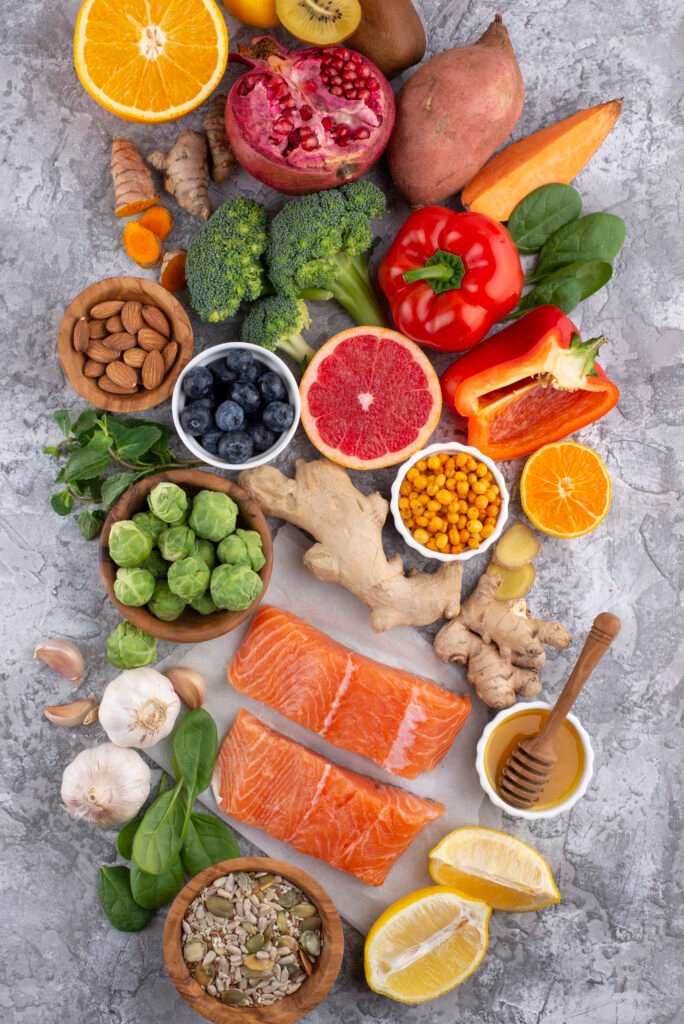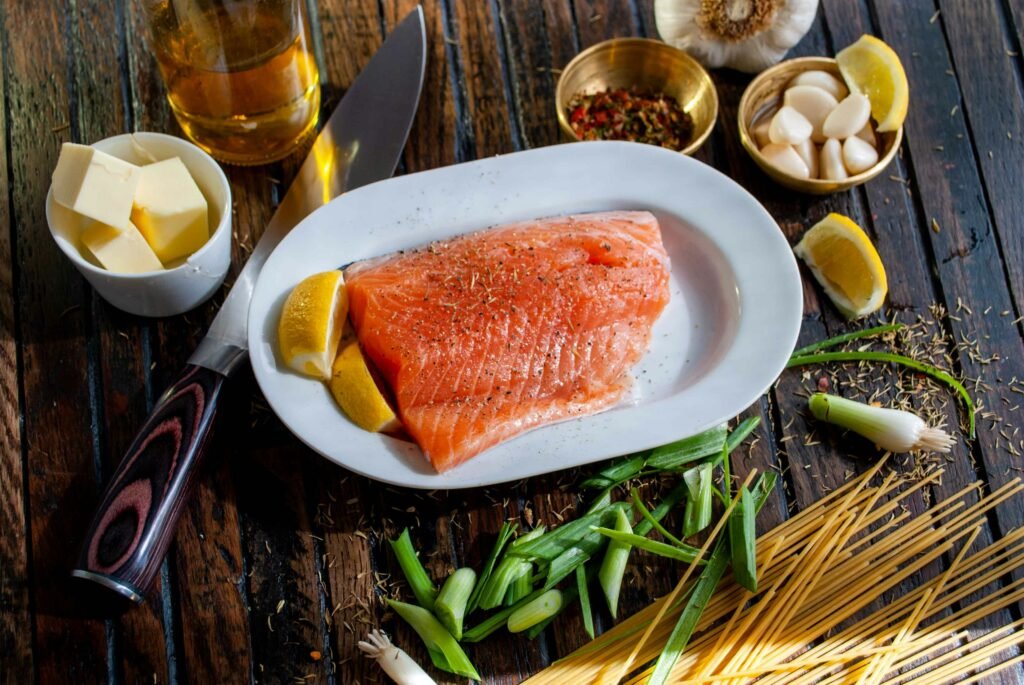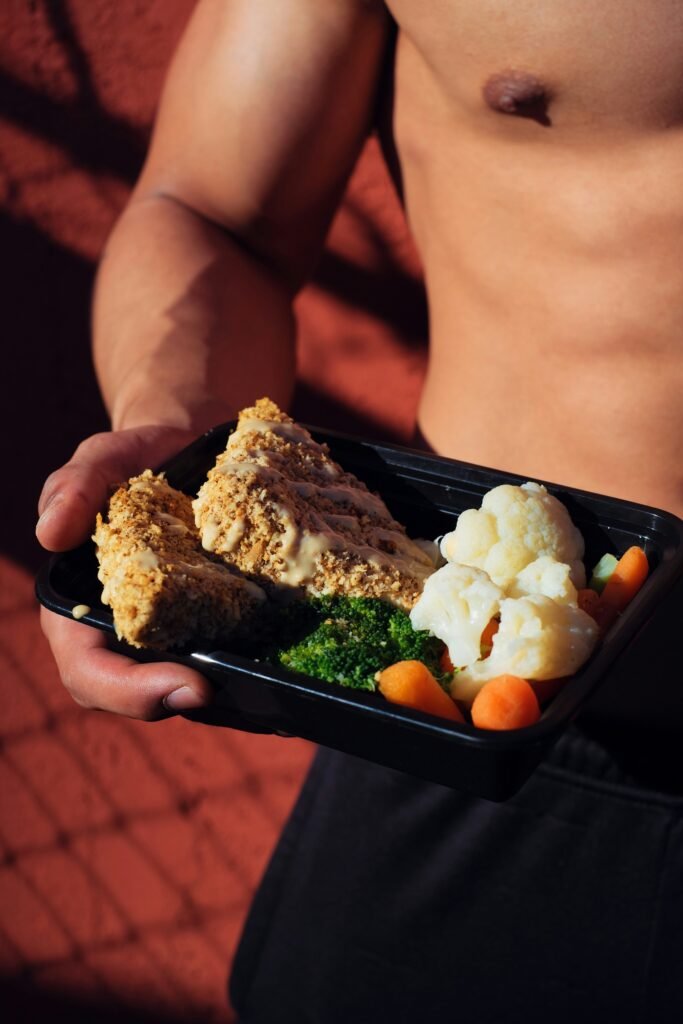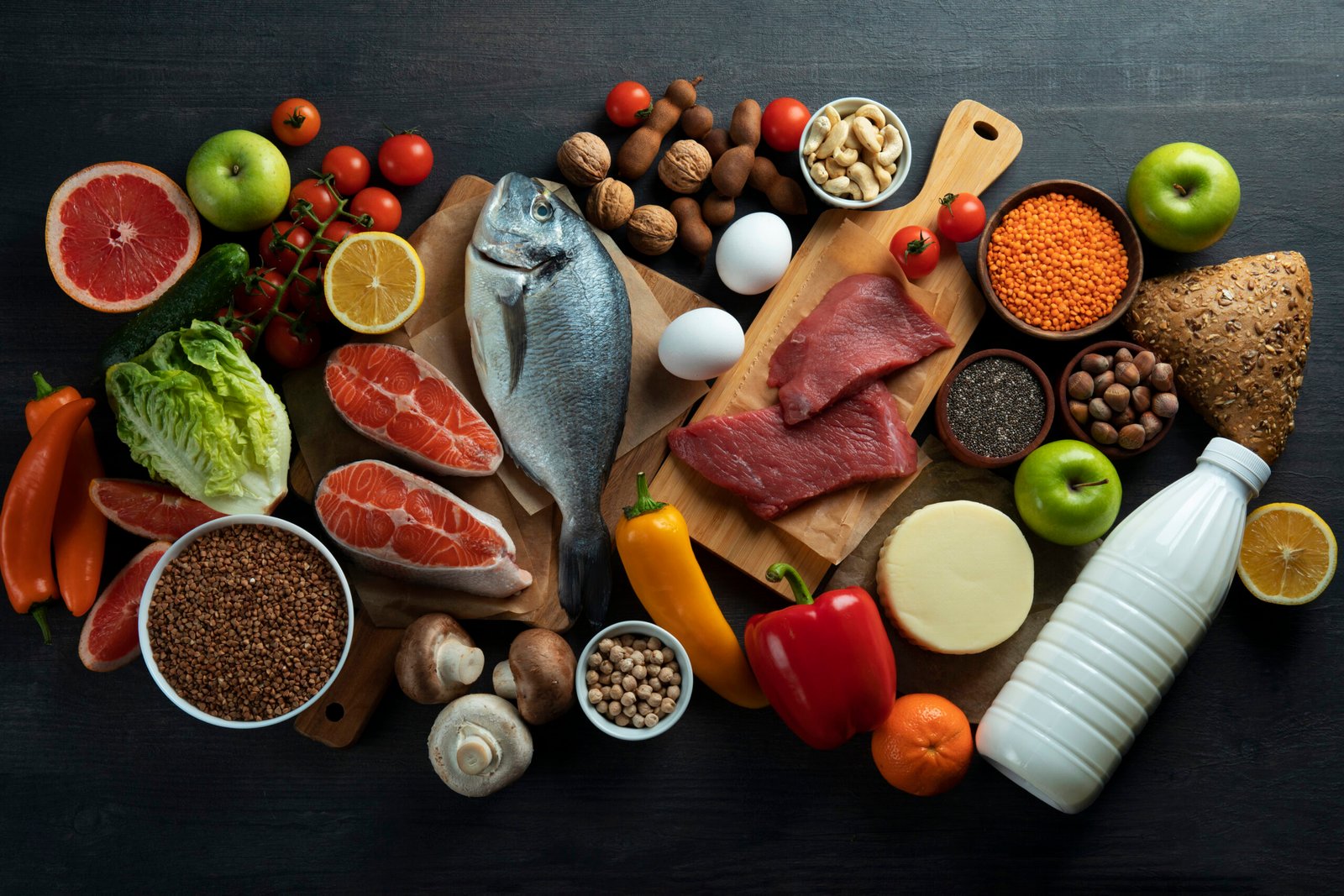Table of Contents
ToggleThe landscape of nutrition is constantly changing, with a never-ending stream of diet plans emerging, each promising a revolutionary approach to weight loss or optimal health. One such plan that has gained significant traction in the fitness world is the 90/30/50 diet. This nutritional strategy revolves around a specific balance of macronutrients designed to promote overall well-being. Let’s delve deeper and explore the intricacies of this popular diet.
A Breakdown of Macronutrients

The cornerstone of the 90/30/50 diet is a specific ratio of macronutrients that provide the body with the essential building blocks for optimal function. Proteins, fibres, and healthy fats all play critical roles in maintaining bodily processes, and this diet strives to create a harmonious balance between them.
Protein (90 grams): Proteins are the body’s essential workhorses, involved in various physiological processes like muscle repair, immune function, and enzyme production. The 90/30/50 diet emphasises consuming 90 grams of protein daily, ensuring your body has an ample supply of amino acids, the fundamental building blocks of proteins. Excellent sources of protein include lean meats, poultry, fish, legumes, and dairy products.
Fibre (30 grams): Fibre, often hailed as a dietary hero, is indigestible by the human body but plays a vital role in digestion and gut health. It promotes feelings of satiety, regulates blood sugar levels, and aids in the elimination of waste products. Fruits, vegetables, whole grains, and legumes are all abundant sources of fibre.
Healthy Fats (50 grams): Healthy fats, often demonised in the past, are crucial for various bodily functions. They support hormone regulation, brain health, and nutrient absorption. Avocados, nuts, seeds, and olive oil are excellent sources of healthy fats.
The Potential Benefits of the 90/30/50 Diet
The 90/30/50 diet plan has garnered interest for its potential to promote weight loss and improve overall health. Let’s explore some of the key advantages associated with this dietary approach:
Weight Management: The core principle of the 90/30/50 diet lies in creating a calorie deficit. The emphasis on protein and healthy fats can promote satiety, potentially leading you to consume fewer calories overall. Additionally, protein has a thermic effect, meaning your body burns more calories digesting and absorbing it compared to other macronutrients. This slight metabolic boost can contribute to weight loss over time.
Enhanced Energy Levels and Improved Focus: The 90/30/50 ratio prioritises macronutrients that can potentially elevate your energy levels and cognitive function:
Sustained Energy: Complex carbohydrates provide a slow and steady release of glucose into the bloodstream, preventing energy crashes and promoting stable energy levels throughout the day.
Brainpower Boost: Healthy fats, like those found in avocados and nuts, are essential for brain health and cognitive function.
Building Muscle Mass and Boosting Metabolism: The 90/30/50 diet emphasises protein, which plays a vital role in muscle health and metabolism:
Muscle Building: Protein provides the building blocks needed for muscle repair and growth. This is particularly important if you’re looking to lose weight while preserving muscle mass.
Metabolic Boost: As mentioned earlier, protein has a thermic effect, potentially leading to a slightly increased metabolic rate, which can contribute to weight management.
Potential Benefits for Blood Sugar Control: The 90/30/50 diet’s focus on complex carbohydrates may offer some advantages for blood sugar control:
Stable Blood Sugar: Complex carbs are digested slowly, leading to a gradual rise in blood sugar levels compared to simple carbs. This can be beneficial for individuals with prediabetes or managing blood sugar.

Embracing Long-Term Success
The 90/30/50 diet, like any dietary approach, presents some challenges. Here’s how to navigate these hurdles and ensure long-term success:
Cravings and Portion Control: Curbing cravings and maintaining portion control are common challenges when transitioning to a new diet. Here are some tips to help you manage:
Stay Hydrated: Often, thirst can be mistaken for hunger. Drinking plenty of water throughout the day can help curb cravings and reduce calorie intake.
Plan Your Meals: Spontaneous decisions often lead to unhealthy choices. Prepping meals and planning snacks in advance can help you stay on track. Consider utilising meal planning Web apps like Goodlife [www.goodlife-app.com] to simplify the process and discover delicious recipes that adhere to the 90/30/50 principles.
Mindful Eating: Pay attention to hunger cues and avoid distractions while eating. Savour your food, chew thoroughly, and stop eating when you feel comfortably full.
Find Healthy Alternatives: If you crave sugary snacks, opt for healthier alternatives like fruits with nut butter or Greek yoghurt with berries.
Navigating the 90/30/50 Lifestyle
Social gatherings and eating out can be tricky when following a specific diet plan. Here are some strategies to keep you on track:
Research Restaurant Menus: Many restaurants offer options that align with the 90/30/50 principles. Look for grilled protein dishes, whole-grain options, and healthy sides.
Practice Portion Control: Even healthy options can be high in calories if you overindulge. Be mindful of portion sizes when dining out.
Focus on Quality Over Quantity: Savour a smaller portion of a delicious, well-prepared dish rather than a large portion of something less nutritious.
Communicate Your Needs: Don’t be afraid to ask for modifications at restaurants. Opt for dressings on the side, request grilled or baked options instead of fried, and choose whole grains over white bread.
Maintaining Motivation and Healthy Habits
Maintaining motivation and healthy habits is key to long-term success with any dietary approach. Here are some tips for the 90/30/50 plan:
Set Realistic Goals: Don’t aim for drastic weight loss overnight. Set achievable goals and celebrate your progress along the way.
Find an Accountability Partner: Having someone to support you and hold you accountable can be incredibly motivating.
Focus on How You Feel: Shift your focus from just weight loss to how much better you feel overall with this dietary approach. Increased energy, improved mood, and better digestion can be powerful motivators.
Make it a Lifestyle Change: View the 90/30/50 diet not as a quick fix but as a sustainable approach to healthy living. Experiment with recipes, find healthy alternatives you enjoy, and make healthy choices a natural part of your life.
Crafting a Personalized 90/30/50 Plan
The 90/30/50 diet serves as a helpful guideline, but it’s not a rigid rule. Individual needs and preferences should be considered when adapting the plan. Here’s how to create a personalised approach:
Calculate Your Macronutrient Needs: The first step is to determine your personalised macronutrient needs. Here’s a general guideline:
Protein: Multiply your body weight (in kilograms) by 2.2 to get your weight in pounds. Then, multiply that number by 0.8. This will give you your target protein intake in grams (rounded to the nearest whole number).
Healthy Fats: Aim for around 50 grams of healthy fats per day.
Carbohydrates: The remaining calories after accounting for protein and fat will be allocated to carbohydrates.
Consult a Registered Dietitian: It is always advisable to consult with a registered dietitian familiar with the 90/30/50 plan. They can assess your individual needs and health conditions, tailor the plan accordingly, and provide valuable guidance throughout your journey.
Sample Meal Plans for Inspiration
Here’s a sample daily meal plan adhering to the 90/30/50 ratio to provide inspiration:
Breakfast (40g protein, 20g carbs, 10g fat):
3 scrambled eggs with spinach and feta cheese
1/2 cup whole-wheat toast with avocado slices
Lunch (45g protein, 30g carbs, 15g fat):
Grilled chicken breast (4 oz)
1 cup quinoa
Roasted vegetables (broccoli, carrots)
Handful of almonds
Dinner (35g protein, 40g carbs, 15g fat):
Baked salmon fillet (4 oz)
1 cup brown rice
Sautéed green beans and bell peppers
Side salad with olive oil vinaigrette
Remember: This is just a sample plan. Feel free to adjust it based on your preferences and specific needs. There are endless possibilities for creating delicious and nutritious meals within the 90/30
Frequently Asked Questions (FAQ) About the 90/30/50 Diet Plan
This section addresses some of the most common questions people have about the 90/30/50 diet plan:
Q: Is the 90/30/50 plan safe for everyone?
A: While the 90/30/50 diet emphasises whole foods and balanced nutrition, it’s not a one-size-fits-all approach. Consulting a doctor or registered dietitian is crucial before starting any new diet plan, especially if you have any underlying health conditions such as diabetes, heart disease, or kidney problems. They can help you determine if the 90/30/50 plan is safe and appropriate for your individual needs.
Q: What if I have dietary restrictions? Can I adapt the 90/30/50 plan?
A: Absolutely! The beauty of the 90/30/50 plan lies in its focus on whole food groups. Here are some resources for adapting the plan to specific dietary needs:
- Vegetarians and Vegans: Focus on plant-based protein sources like beans, lentils, tofu, tempeh, and seitan. Ensure you’re incorporating enough healthy fats from nuts, seeds, and avocados.
- People with Gluten Sensitivity or Celiac Disease: Opt for gluten-free whole grains like quinoa, brown rice, buckwheat, and millet.
- Individuals with Dairy Intolerance: Explore dairy alternatives like lactose-free milk, almond milk, and plant-based yoghourts.
Remember, consulting a registered dietitian familiar with the 90/30/50 plan and your specific dietary restrictions can ensure you get the proper guidance and create a safe and effective personalised plan.
Q: Can I exercise on the 90/30/50 diet plan?
A: Absolutely! In fact, exercise is highly recommended for overall health and weight management. Combining a healthy diet with regular physical activity is ideal for achieving your fitness goals. The 90/30/50 plan provides the necessary nutrients to fuel your workouts and support muscle recovery.
Q: How long will it take to see results with the 90/30/50 diet plan?
A: Weight loss results can vary depending on several factors, including your starting weight, activity level, and overall adherence to the plan. Generally, a healthy and sustainable rate of weight loss is 1-2 pounds per week. Remember, focus on the positive changes you experience beyond just the numbers on the scale, such as improved energy levels, better digestion, and a healthier relationship with food.
Additional Resources:
- Consider including links to credible websites or social media accounts (of registered dietitians or organisations) that provide reliable information about the 90/30/50 diet plan and healthy recipes.
By providing answers to these FAQs, you can empower readers to make informed decisions about the 90/30/50 diet plan and its suitability for their individual needs and goals.

Your Potential with the 90/30/50 Diet Plan
The 90/30/50 diet plan has captured the attention of many seeking a balanced and potentially effective approach to weight loss and healthy eating. While the core principles of emphasising protein, healthy fats, and complex carbohydrates hold merit, it’s important to approach this (or any) diet plan with a critical eye and a focus on long-term sustainability.
Remember:
- The 90/30/50 ratio might serve as a helpful guideline, but it’s not a rigid rule. Individual needs and preferences should be considered when adapting the plan.
- Consulting a doctor or registered dietitian is crucial before starting any new diet plan, especially if you have underlying health conditions.
- Focus on making healthy choices you can maintain for the long term. Restrictive diets are often unsustainable and can lead to yo-yo dieting.
The 90/30/50 diet plan can be a valuable tool for promoting weight loss and healthy eating habits. By understanding its core principles, potential benefits, and practical tips for getting started, you can embark on a journey towards a healthier and more vibrant you.
Share Your Story and Ask Questions!
This comprehensive guide aimed to provide you with a thorough understanding of the 90/30/50 diet plan. Did you find this information helpful? Have you tried the 90/30/50 plan? Share your experiences and questions in the comments section below. Let’s create a supportive community where we can learn from each other and embark on a path to a healthier lifestyle!





